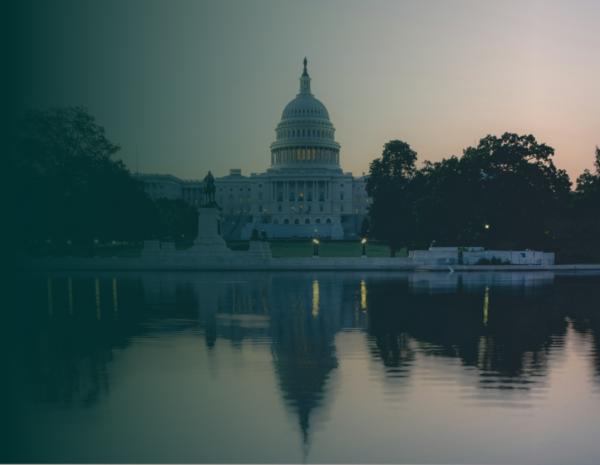The COVID-19 pandemic has profoundly impacted education in the United States. In 2020, the pandemic ushered in a wave of remote learning and hybrid models. Unprecedented challenges emerged, including school closures, digital disparities, and disruptions to traditional learning. These challenges forced educators, students, and families to adapt to new methods of instruction and support. In response, policymakers have also had to become creative in responding to changing educational circumstances.
The COVID-19 Pandemic’s Impacts on Education
The pandemic affected all levels of education, from pre-K to high school and higher education. These consequences are still being examined. The full impact of the COVID-19 pandemic is not yet understood. Studies have indicated that students continue to suffer from health issues, remote learning, distance education, and shutdowns. Disadvantaged students are at increased risk of negative outcomes.
The United States has a prolonged history of educational inequality. The COVID-19 pandemic only exacerbated these inequities, making them more visible in the public eye. Policymakers have been confronted with the immense need to address these challenges. Rather than rebuilding what was damaged during the pandemic, many recent education policies aim to address historical issues and build a more equitable future.
Increased public understanding of educational inequality can be an advantage for policymakers. Legislators seeking to achieve wins in education can take advantage of this momentum and pass policy improvements for their community.
Areas of emphasis for policymakers around education include:
- Postsecondary school access and success
- School improvement and redesigns
- Financial equity
- Racial equity
These will remain essential as the U.S. grapples with the ongoing educational impacts of the COVID-19 pandemic.
The State of Education Following COVID-19
Studies have shown that, throughout the COVID-19 pandemic, students have been most affected by:
- Health issues, both their own and those of loved ones
- Levels of institutional trust
- The location and circumstances of their home life
On average, U.S. public school students in third through eighth grade lost the equivalent of half of a school year of learning in math and a quarter of a school year in reading. For students and educators to make up these significant gaps in learning and meet necessary benchmarks, it would require approximately 120-150% more lessons in each subsequent school year. Such an increase requires additional funding, time, resources, and staff.
Federal Efforts in Post-Pandemic Education Reform
President Biden was inaugurated in the midst of the COVID-19 pandemic, when many students across the country were still participating in distance learning. Since the inauguration, the Biden Administration has passed many initiatives related to education. These include support for schools to reopen safely, such as increased funding and access to resources.
American Rescue Plan
President Biden signed the American Rescue Plan (H.R.1319) into law on March 11, 2021. Aiming to accelerate and improve the nation’s response to and recovery from the COVID-19 pandemic, the Plan is a comprehensive legislative and budget proposal that includes financial provisions for a myriad of programs within the United States. A primary aspect of the Plan is a $130 Billion investment in public education. This represents one of the largest investments in public education in U.S. history.
Funding, distributed throughout the country, will go towards the initiatives outlined in President Biden’s Improving Student Achievement Agenda below. Funds are to go towards building improvements such as air quality systems, salaries and benefits for staff, and increased educational programs.
President Biden’s Improving Student Achievement Agenda
On January 17, 2024, President Biden announced the Improving Student Achievement Agenda. The Agenda focuses on proven strategies that aim to accelerate students’ academic performance. The Students Achievement Agenda emphasizes three main initiatives:
Increasing Student Attendance
There is a strong correlation between absenteeism and negative learning outcomes. As such, the Agenda places a strong emphasis on increasing student attendance. The Administration has encouraged schools to create personalized plans for students in an effort to reduce absenteeism and truancy.
Providing High-Dosage Tutoring
The Administration has also promoted access to tutoring, particularly in disadvantaged communities. The federally-funded Americorps program aims to meet this need. Americorps fellows work with disadvantaged students to address gaps in educational attainment.
Increasing Summer Learning and Extended/After-School Learning Time
Schools across the country experienced extensive loss in educational instruction throughout the pandemic. The American Rescue Plan includes funding to increase in-person instruction time. This includes summer learning opportunities, as well as after-school learning time.
State Efforts in Post-Pandemic Education Reform
Across the country, state efforts to address educational challenges vary. Approaches, effectiveness, and resource delegation in COVID-19 responses differ depending on the state. Democrats have placed emphasis on increased investment and equity initiatives. On the other hand, Republicans have prioritized parental rights in education and evaluated material taught in public schools.
Democratic-controlled legislatures have adopted many different approaches to educational investments and equity initiatives. In California, for example, Governor Gavin Newsom established the Higher Education Recovery with Equity Task Force in August of 2020. The task force was convened to discuss new approaches to post-secondary education preparation and workforce readiness. With a diversity of voices from across the state, the task force helped ensure that new initiatives were accessible and impactful for every community.
Legislators in Republican-controlled states are prioritizing enforcing control over the lessons taught in schools. There is a campaign for increased parental oversight in classroom instruction. This has led to widespread introductions of bills such as Parental Bills of Rights, book bans, and reviews of history and literature lessons with an eye towards countering the “woke” agenda.
Education Reform Efforts in the 2024 Elections
Education remains essential to the daily life of many U.S. citizens. Yet, education is often not seen as an issue that is quintessential to the deciding of votes in the ballot box. As such, education may become a less salient issue for politicians during this election year. Despite this, it remains essential to understand the state of education in the aftermath of the COVID-19 pandemic.
Track Post-Pandemic Education Reforms in 2024 With Plural
Plural is the legislative intelligence tool of choice for lobbyists and advocates monitoring post-pandemic education reforms in 2024. With Plural, you’ll:
- Access superior public policy data
- Be the first to know about new bills and changes in bill status
- Streamline your day with seamless organization features
- Harness the power of time-saving AI tools to gain insights into individual bills and the entire legislative landscape
- Keep everyone on the same page with internal collaboration and external reporting all in one place
Create a free account or book a demo today!
More Resources for Public Policy Teams
Key Benefits of AI for Lobbying & Advocacy
Want to be able to explain the benefits of artificial intelligence for lobbying and advocacy? Everyone is talking about AI. And we get it, it’s not simple to understand. But as an AI-powered organization, Plural is here to help you get the most out of advancements in AI to make your job as a policy […]
2025 Legislative Committee Deadlines Calendar
Staying on top of key deadlines is manageable in one state, but if you’re tracking bills across multiple states, or nationwide, it quickly becomes overwhelming. That’s why we created the 2025 Legislative Committee Deadlines Calendar. Stay ahead of important dates and download our calendar today. Get started with Plural. Plural helps top public policy teams get […]
End of Session Report: Florida 2024 Legislative Session
The 2024 Florida legislative session saw significant activity in the realm of insurance and financial services, reflecting key themes of consumer protection, market stability, and regulatory modernization.




